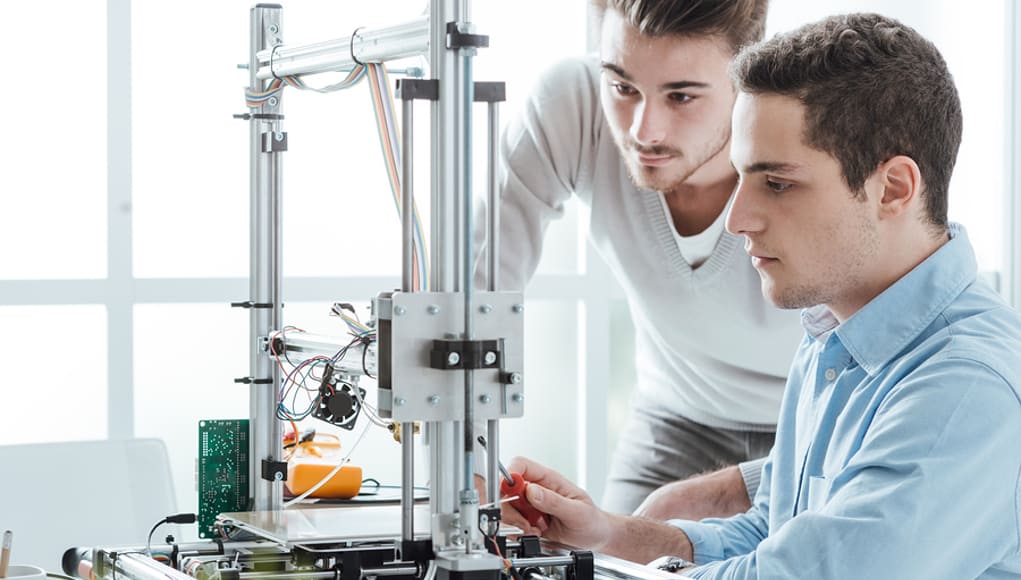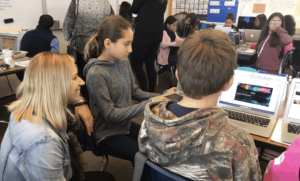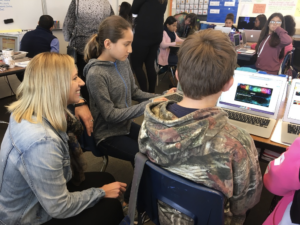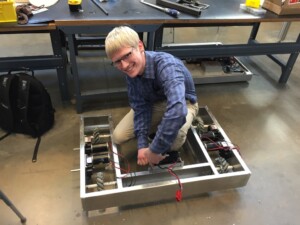The Power of Project-Based Instruction in AP Physics

By Jack Brunell
When I first walked into my AP Physics class last year, I was eager to discover what awaited me. I had heard many good things about the class from people who took it the year before I did, fantastical stories about building everything from arches to atlatls (a rudimentary but effective ancient spear-throwing device). Coming out of a lecture-and-lab biology course that really wasn’t my thing, I was excited by an opportunity to do something different. It already seemed like a great choice, taught by an exceptional teacher I had already taken a class with and that was highly recommended for me by our school guidance counselor.
Our class used the Knowledge in Action AP Physics 1 curriculum, which was developed by a consortium led by researchers at the University of Washington and Lucas Education Research in collaboration with teachers, including our own. The course was composed of seven project units that incorporated everything we needed to learn in the course and every project had a theme and explored relevant real-life applications of the skills we were learning. During the year, we took on a multitude of roles, acting as astronomers, forensic investigators, Hollywood science advisors, and even hunter-gatherers building tools to hunt for food.
It all seemed unreal at first. For the year’s first project, Reel Physics, my partner and I completed a detailed analysis of the physics in a scene from 2012, determining that the motion of the volcanic rocks rapidly falling around an RV was not realistic. The project was certainly informative, but more than anything, it was fun to complete. We were proud of the work we did, and the learning about the basics of motion that happened translated to good scores on the unit exam. The end of the second project had the class dressed in togas presenting their Roman arches to the Emperor after a long process of procuring materials and managing the construction of the art using our newly-attained knowledge of forces and friction.
The magic of the project-based philosophy that drove our course was in its ability to ensure that the learning we achieved would not be exclusively theoretical. The projects that we completed took the concepts and skills we learned and made us apply them, challenging us to think critically and creatively—to understand what we were learning. The project-based course also ensured that we all were accountable, as both the final product of each project and a unit exam ensured that we needed to learn the material ourselves and support our partners in doing so. The challenge of the course was balanced with the fun of the projects, and this strong combination made and continues to make AP Physics 1 the favorite class of many students taking it.
It can likely be agreed upon that the core purpose of primary and secondary education is to prepare students for their future. My school district’s mission statement is omnipresent as I go about my day at school, printed on a small poster in every classroom extolling the importance of preparing students for success in higher education, careers, and the catch-all “life”. In many traditional classrooms, particularly from the point-of-view of students, there is little to no connection between our learning and “life”. When students fail to see purpose in what they are doing, often, they simply don’t do it.
One of the biggest advantages of a project-based model that was evident in our course was the authentic learning experiences it provided. While it is unlikely that any of us will become extraterrestrial lander engineers, or modern-day hunter-gatherers, the ways in which we applied our learning allowed us to gain experience applying the course material, were very interesting and informative, and proved immensely helpful on the AP exam. Subjects that may otherwise have been very dull to someone uninterested in physics were made fun and interesting, like rotational dynamics being taught in the context of building a hunting sling and simple harmonic motion being taught in the context of creating our own kinetic art pieces. These fun projects brought out creativity and curiosity in learners with many different levels of motivation and aptitude, and allowed almost everyone to find success and learning in the class.
I probably don’t have a future as a physicist, but even then, what I learned in AP Physics 1 was interesting, informative and applicable to my everyday life in some ways. Above all, it was fun. I still remember when I took a toga selfie with my teacher before presenting to the Emperor. I still remember spending half an hour looking around the hardware store for a component of my group’s kinetic art project. As a student in AP Physics 2 this year, I am finding that I have never retained anything as well as what I learned in project-based AP Physics 1.

That said, my experience in AP Physics I last year has inspired my current work on the self-driven, year-long culminating Senior Project required by my school. I chose to pursue project-based learning further as the core component of my Senior Project. I am excited to be developing a project-based curriculum unit exploring cities and urban land use for an AP Human Geography course, as it allows me to explore a new dimension of project-based instruction in a subject that I am passionate about. More than anything, I am thankful to have been able to enjoy a project-based course as part of my education, and I hope that eventually, the choice to take a project-based course will be accessible to students across the country.
This blog is part of “It’s a Project-Based World” series. To learn more about this series and to learn ways that you can contribute, click the icon below to go to the Project-Based World page.

Join in the conversation at #projectbased.
For more, see:
- 13 Tips for Students Getting Started with Project-Based Learning
- It’s a Project-Based World. Let’s Prepare Students for It.
- Getting Smart Podcast | It’s a Project-Based World and a PBL Movement
Jack Brunell is a high school senior in Bellevue, Washington who is currently developing a project-based curriculum exploring urban development for Human Geography courses.
Stay in-the-know with all things EdTech and innovations in learning by signing up to receive the weekly Smart Update.








John marsh
Well explained about the Assignment on Physics so many students confuse which type to make an assignment and what format or method are used this article its really help for a student making them on assignment.